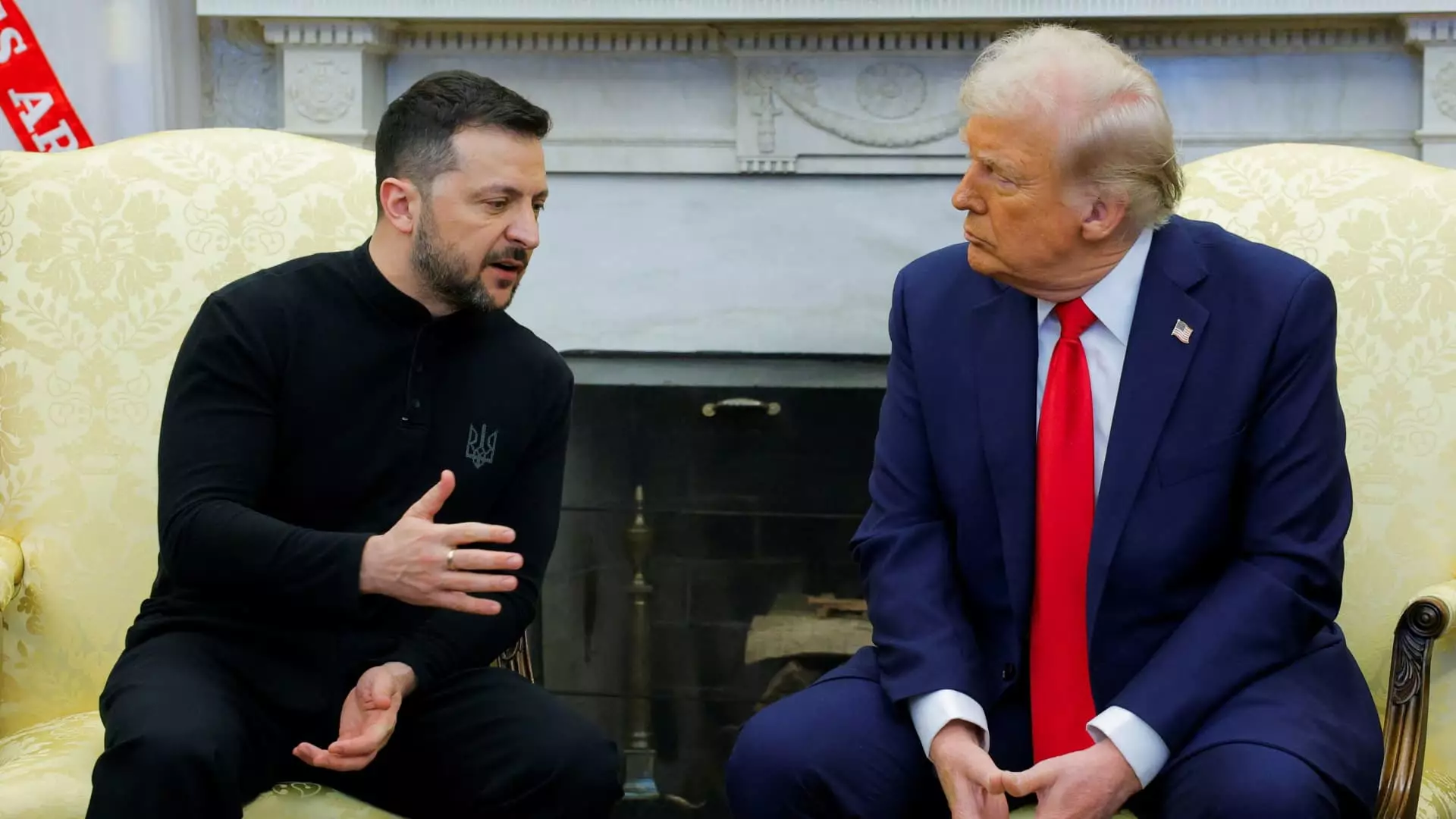In an era characterized by political upheaval and international conflict, the recent meeting between U.S. President Donald Trump and Ukrainian President Volodymyr Zelenskyy in Rome stands out as a momentous occasion. Taking place in the breathtaking St. Peter’s Basilica, a site associated with peace and reconciliation, their one-on-one conversation comes at a time when the discourse surrounding the ongoing war in Ukraine has reached a critical juncture. Zelenskyy described the encounter as potentially historic, expressing hope that the discussions could catalyze significant progress towards peace. However, one must question whether this meeting can truly shift the course of an entrenched conflict that has rattled the global order.
Despite the optimistic declarations from both leaders, the reality on the ground remains grim. The backdrop of this encounter is a war that has caused immense suffering for the Ukrainian people and significant geopolitical tensions. The symbolism inherent in their meeting, set against the funeral of Pope Francis, further amplifies the stakes; a call for peace resonates strongly, yet translating that symbolism into actionable results is an entirely different challenge. The voices that echo in such august spaces may be uplifting, but they oftentimes mask the underlying complexities that can complicate or even hinder meaningful change.
Inconsistent Messaging and Divergent Interests
In the aftermath of their private talks, the details surrounding what was discussed remain murky. Reports indicate that the conversation encompassed critical issues such as the need for a complete ceasefire and the protection of innocent lives. However, the nuances of each leader’s position reveal significant divergences in priorities, elucidating potential roadblocks that may thwart progress. While Trump has been pressing for an agreement that would involve recognizing Crimea as Russian territory — a deal that Ukraine vehemently opposes — Zelenskyy’s insistence on maintaining integrity regarding territorial sovereignty draws a hard line in the sand.
This incongruence raises questions about the efficacy of U.S. diplomacy under Trump’s administration. The approach suggested by Trump’s envoy may be seen as opportunistic, seeking a quick resolution rather than a sustainable peace. By prioritizing expediency over principles, the U.S. risks alienating its allies in Europe, who view concessions regarding Crimea as unacceptable. As Trump navigates the complexities of negotiations, one must wonder if he truly comprehends the stakes involved or if he is simply maneuvering to bolster his political image back home.
The Leadership Dynamic: Allies and Adversaries
While both leaders may have conveyed cordiality during their meeting, their relationship is anything but straightforward. Historically, interactions between Trump and Zelenskyy have been fraught with tension, compounded by accusations and geopolitical maneuvering. Their previous Oval Office encounter, which became a spectacle of derision and blame, exemplified how personal animosities can intrude upon critical diplomatic discussions. As they emerged from the tumultuous backdrop of the past into their latest meeting, the lingering mistrust must have colored their engagement.
One cannot help but feel that each leader is leveraging the other for their own political aims. Trump’s desire for a swift peace with Russia may lead him into troubling compromises, while Zelenskyy is forced to navigate his reliance on U.S. support without conceding core principles of sovereignty and territorial integrity. This duality complicates their interactions, transforming genuine attempts at diplomacy into a game of calculated political chess where sacrifices may be made without full consideration of the long-term consequences.
The Cultural Disconnect: Attire and Identity
An often-overlooked aspect of their meeting was the choice of attire, which serves as a microcosm of the broader cultural and political rift that defines their relationship. Zelenskyy, opting for military-style garb rather than traditional diplomatic attire, is a powerful visual statement — one that underscores his solidarity with the Ukrainian people amidst ongoing conflict. This choice not only symbolizes resilience but also emphasizes a disconnect; while Trump navigates this diplomatic landscape in tailored suits, Zelenskyy’s wardrobe choice signals a response to the urgency and reality of war.
Such contrasts underscore the divide that exists not merely between the two leaders but also between their respective nations. The sartorial decisions made in these high-stakes meetings can often reflect underlying sentiments and priorities, highlighting the challenges of effective communication across cultures and political contexts. The optics of their meeting, infused with both hope and skepticism, illustrate the labyrinthine path that lies ahead in the quest for peace.
In the grand tapestry of international relations, meetings like this can shake the foundations but often leave unresolved the underlying tensions that need addressing. The challenge remains: can hope manifest into meaningful action, or will it dissipate into a mere footnote of diplomatic history? The irony of such high aspirations in the face of possible failures is what makes the discussion between Trump and Zelenskyy so vitally complex and, ultimately, so potentially bankrupt.


Leave a Reply